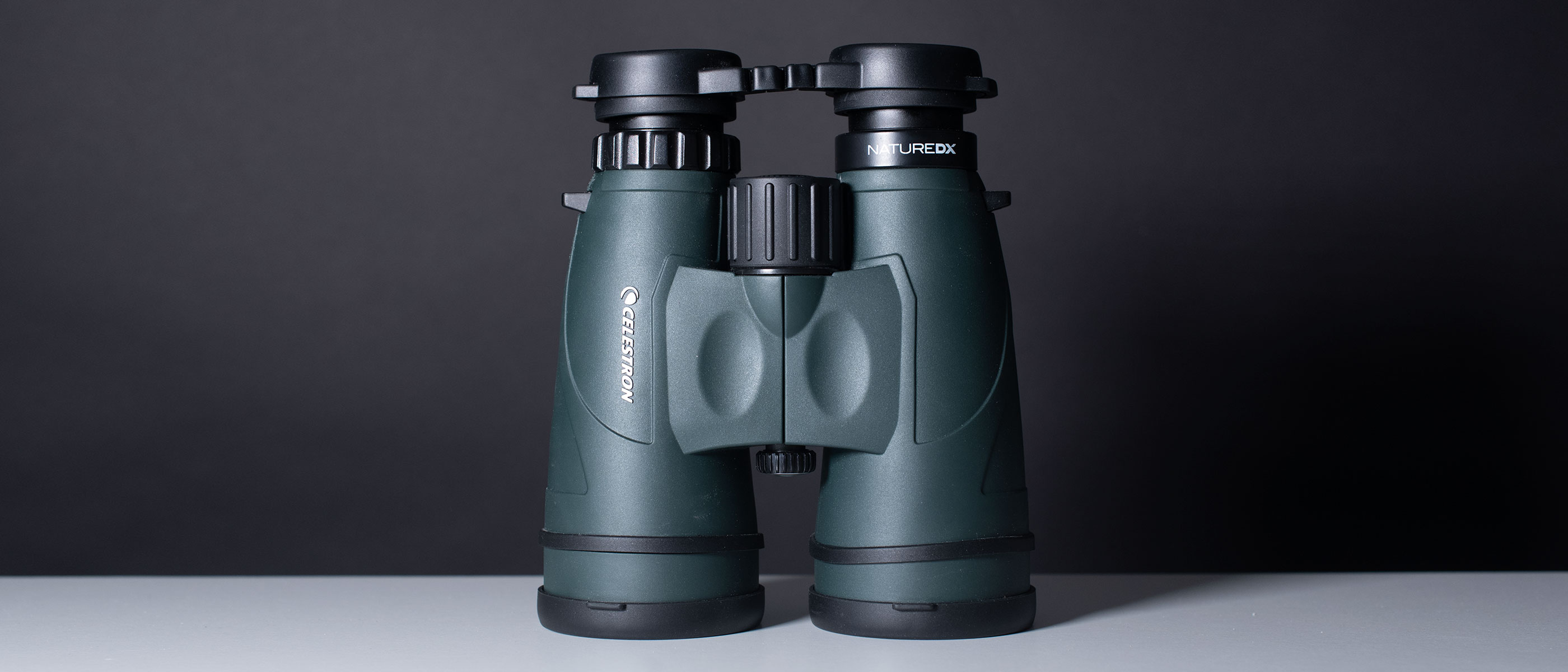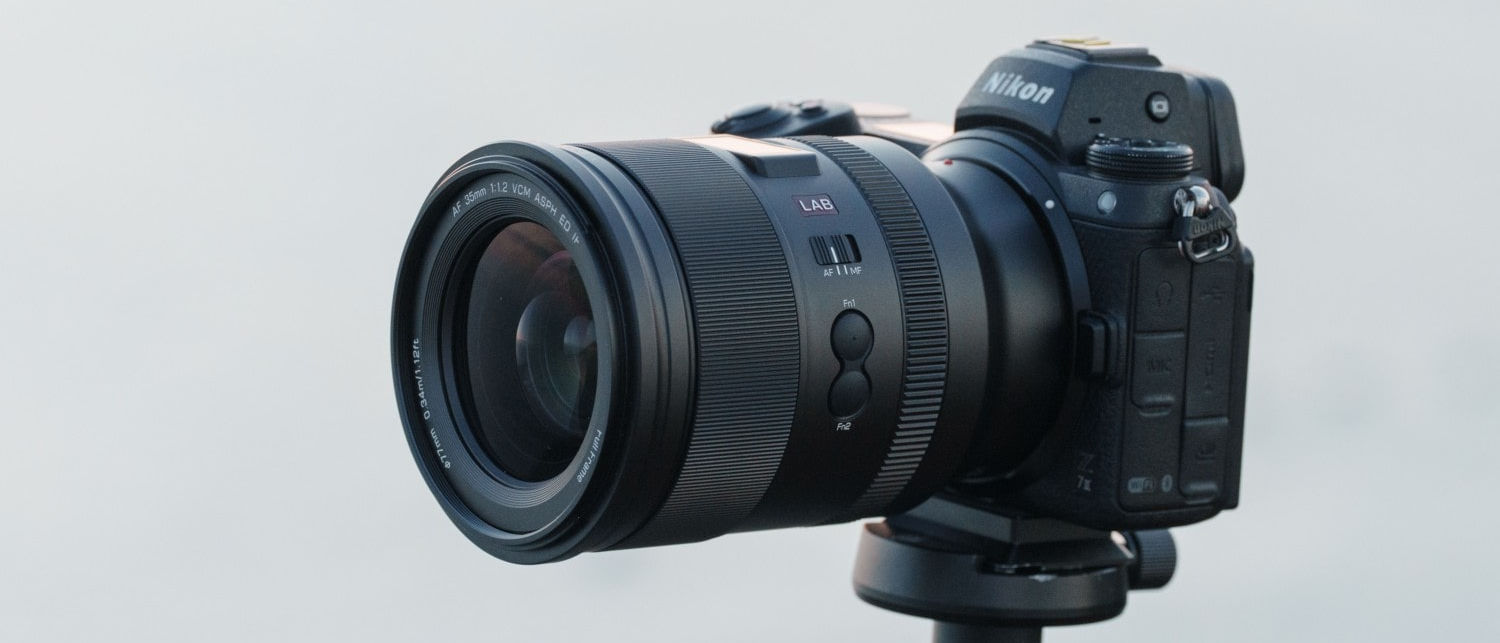Digital Camera World Verdict
Celestron have managed to strike a happy balance between affordability, good magnification and clear, bright views. The usual excellent durability these binoculars are accessible to those on smaller budgets but have the build of those many times their price.
Pros
- +
Affordable for the optical quality
- +
Eyeglasses wearers benefit from generous eye relief
- +
Fits all hand sized
Cons
- -
Some color fringing
- -
A little soft around the edges
Why you can trust Digital Camera World
The Celestron Nature DX 12x56 binoculars are designed as beginner binoculars for those that want something a bit extra above the normal budget binoculars. That means users that are looking for high-quality glass, good build quality, decent lens coatings and a stylish finish. Fortunately, these binoculars have all this in abundance, making them the best binoculars for outdoor and nature photographers, as well as birding enthusiasts.
With 12x magnification, the binoculars take observers closer to subjects than the lower-powered 10x version and as a result, this produces a more intimate view of subjects like animals, mammals, and other wildlife. There’s a typical loss of light when higher magnifications are concerned but Celestron counteracts this by utilizing a 56mm aperture on the two objective lenses.
The Nature DX 12x56 is built with higher-quality BaK-4 glass and is glazed with phase coatings to help produce flare-free, sharp views. Solid in the hand, the rubber armoring flanking the two optic tubes is sealed around the glass to produce a pair of binoculars that are completely waterproof so there’s no worry about them keeping up with you while you’re out.
Whether you want a pair of inexpensive binoculars to peer at the squirrels in the park or something with a bit more power to spot the wading birds in the nature reserve, these binoculars provide a happy balance between the two.
Celestron Nature DX 12x56: Specifications
Eye relief: 0.63-inch/16mm
Objective lens diameter: 56mm
Angular field of view: 5.5 degrees
Weight: 36.2 oz. (1028g)
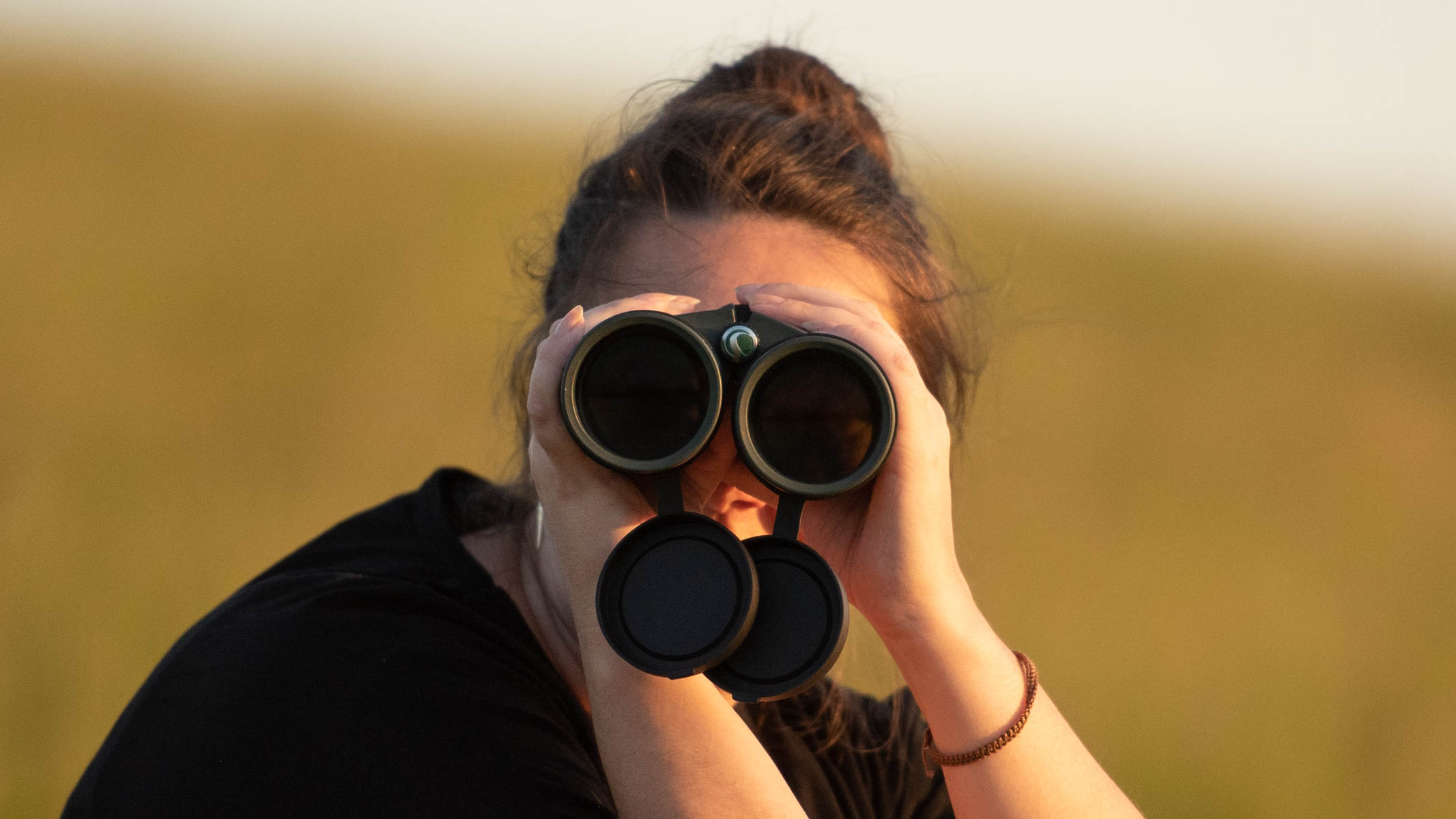
Celestron Nature DX 12x56: Key Features
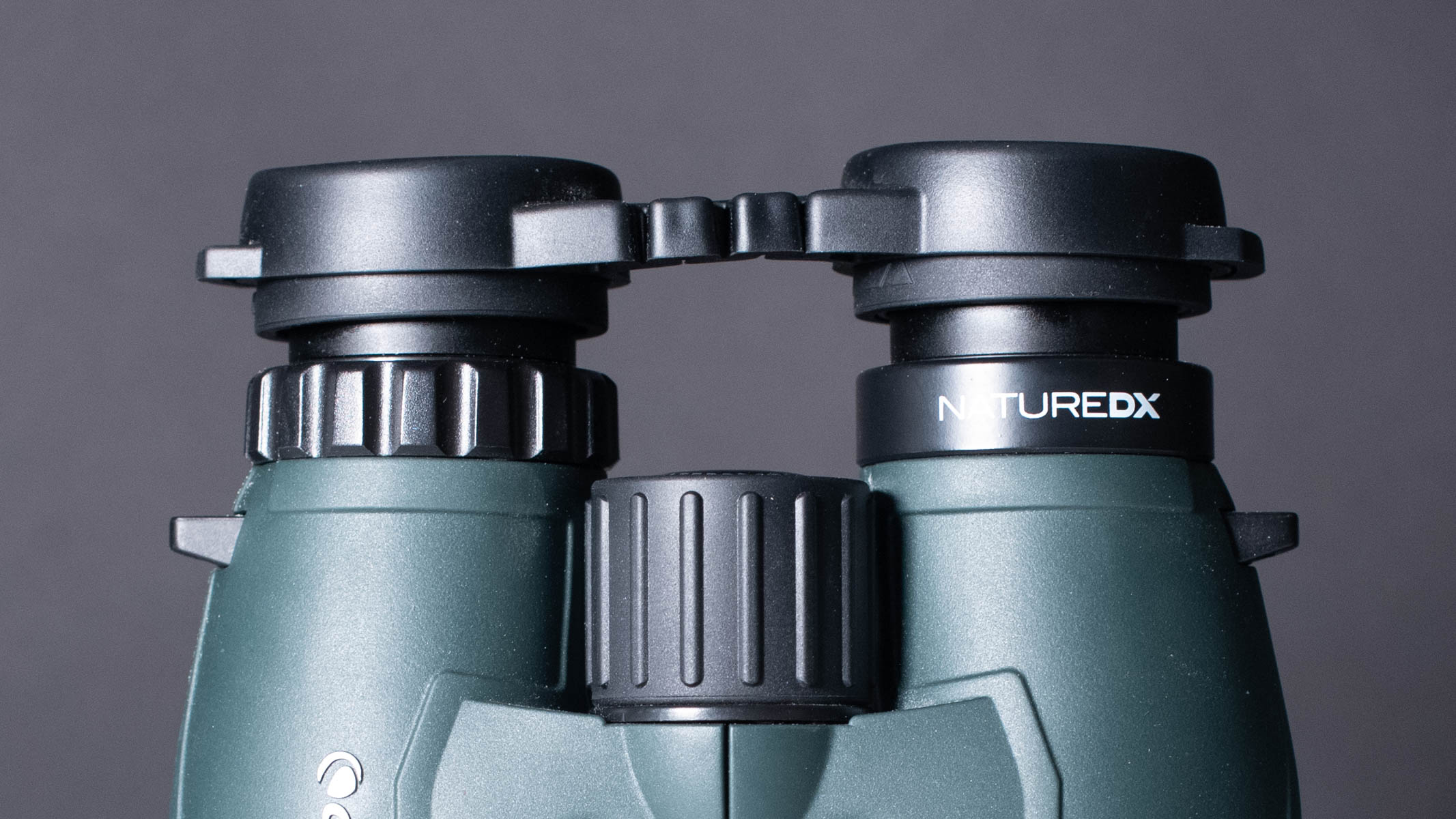
Beginner observers who are coming to birdwatching, wildlife spotting, or automotive viewing fresh will find that the Nature DX 12x56 binoculars have everything you could want. A soft bag to transport the binoculars in when in transit keeps them safe and protected from scratches and scrapes. The eye lens caps are twinned together which makes them harder to lose. The object lens caps are attached to the end of the binoculars with a gripping rubber ring that doesn’t budge when taken out and about, but they easily come off if you need to remove them.
Small details like these make the Nature DX’s a pleasure to use. Hand them to a slightly younger observer and receive them back again to find that all the accessories the older binocular user appreciates (namely, the caps and bag which protect the model) are miraculously still there thanks to clever design.
The best camera deals, reviews, product advice, and unmissable photography news, direct to your inbox!
There’s a deep indentation on the top of the binoculars for ergonomic placement of the fingers while observing. This feels comfortable in the hand and the textured rubber around the holding points makes it hard to drop them even when conditions are wet outside.
Operating the focus wheel is simple and can be felt easily through thick gloves. The same is true of the twistable eyecup adjusters that provide appropriate 16mm eye relief for those that wear spectacles. Twist them all the way out when not using glasses though as they’re still just as usable. One thing we noted while using these binoculars is how reliable the dioptre ring is. On plenty of more affordable binoculars, we found this focusing adjustment to be so loose that it’s easily knocked when removing them from a bag, but we didn’t have this problem with the Natures.
Celestron Nature DX 12x56: Build & Handling
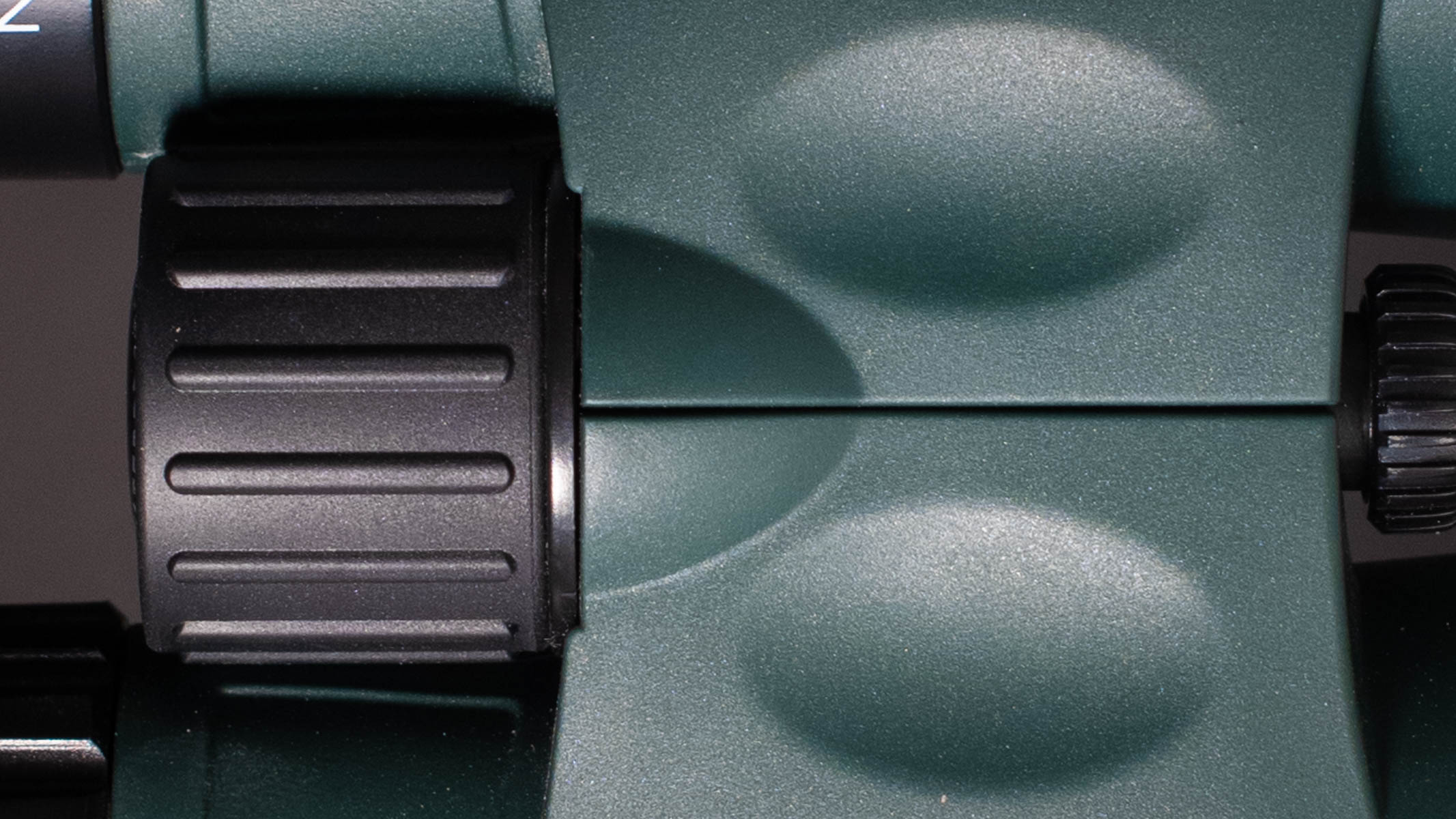
Of course, there comes times when hand-holding the Nature DX’s won’t be enough. Sat in a hide all day, or attending an air show will make short work of your shoulders if you plan to hold them up every time. That’s because they’re over 1kg in weight.
This will affect young people and those with arm strength/mobility issues the most. Fortunately, that’s why Celestron has fitted a mounting point just at the front of the binocular hinge. Screw off the emerald emblem on the front and you’re met with a quarter-inch mount which, when paired with an appropriate binocular mount, affixes to a tripod to make long-term viewing much easier.
While skywatching isn’t their primary focus, these binoculars allowed us to discern Jupiter while it was out - we even got glimpses of the whispered suggestions of some of Jupiter’s moons. We were impressed by how well these binoculars perform both during the day and occasionally at night.
The lenses remained clean and free of dirt. Though they caught the rain occasionally their weatherproofing and rain guards protected the glass from the elements. Nitrogen purging on the internals prevented any internal fog build-up as well, so moving from the warm house or car to the colder wintry climes outside had no effect on use - something that even much more expensive binoculars sometimes lack.
Canon 10x32 IS: Performance
The biggest test we’ve found for binoculars is either viewing extremely contrasted edges during the day or trying to see stars in the sky at night. Fortunately, the Nature DX 12x56 performs adequately in both scenarios. 12x magnification really is much more useful than the wider field 10x models available and allowed us to pick out finer details in the feathers of the birds we observed.
Looking right at the branch edges that jut out into the sky we do notice a certain amount of chromatic aberration (color fringing) but to be honest we’d expect that with binoculars in this price range. It doesn’t spoil the views and beginners need not worry because it’s likely unnoticeable to the untrained eye (unless specifically looking for it).

At night, we observed the moon when it was full and were impressed with just how bright the views were. Almost a little blinding, the full moon was shining brightly through the BaK-4 glass and the binoculars provided a detailed image of the lunar surface. It’s tricky to use them for stargazing (unless in a very dark area) because they’re neither powerful enough nor big enough to let in an appropriate amount of light for dark sky viewing, especially for anyone near towns or cities. But because they are a more generalist binocular we don’t think that should put anyone off.
In fact, birdwatching in the garden at home is ideal because of the Nature DX’s focus down to just 2.9m. Set up a small bird feeding station outside the window as we did and you’ll soon be spotting the whiskers on blackbirds (yes that’s right, whiskers) and discovering a whole host of other features you’ve never noticed before.
Celestron Nature DX 12x56: Competitors
Take a step down in size and you’ll probably be better off with something like the Nikon ProStaff P3 8x42 binoculars. They have a beginner-level price but Nikon spends the money where it counts and has splashed it (seemingly) all into the glass optics, which are beyond what we’d expect for the money.
Need something a bit bigger, and geekier? Want to get a closer look at those night sky objects? Then the Celestron SkyMaster Pro 20x80 are for you. Massive 20x magnification takes you right up to the lunar surface of the moon, giving users the ability to identify different seas and areas on its surface. The 80mm objective lenses positively drink in the light (be careful on a full moon) and Jupiter and its moons are clearly visible on a cloudless night.
Celestron Nature DX 12x56: Verdict
A sweet spot for binoculars, the Celestron Nature DX 12x56 pack a heck of a lot of optics into a tidy, affordable package. A close minimum focusing distance and 12x magnification make them ideal beginner wildlife binoculars and their 56mm objective lenses even offer some nighttime views (especially of the moon) an attractive opportunity.
Are they the sharpest? No. Do they have no color fringing? No. But are they one of the best binoculars you can buy for the price? Wholeheartedly, yes we think so. Just big enough to zoom in on far-away subjects without becoming cumbersome, the DX 12x56 is the model of the line-up to get.
You might also like our guides on the:
• Best monoculars • Best spotting scopes • Best night vision goggles
Jase Parnell-Brookes is an award-winning photographer, educator and writer based in the UK. They won the Gold Prize award in the Nikon Photo Contest 2018/19 and was named Digital Photographer of the Year in 2014. After completing their Masters Jase has spent a good chunk of two decades studying and working in photography and optics shooting and writing all over the world for big-name brands and media outlets. Now the Channel Editor for Cameras and Skywatching at Space.com their speciality is in low light optics and camera systems.
